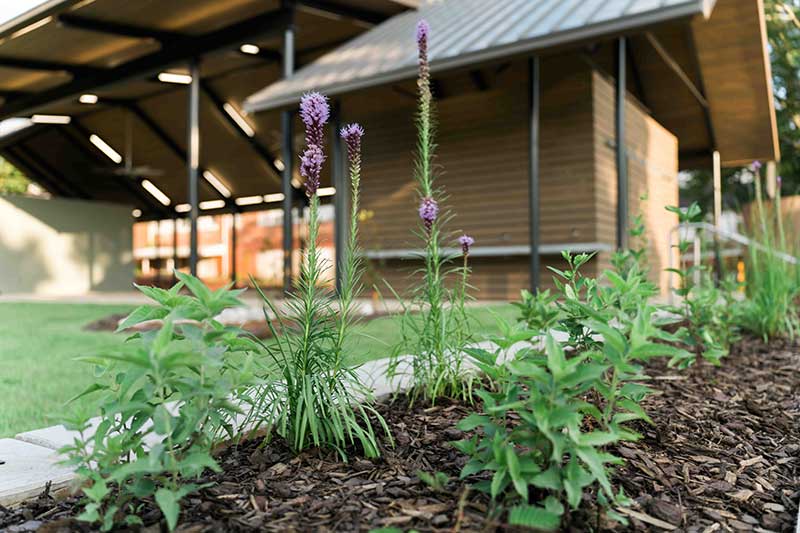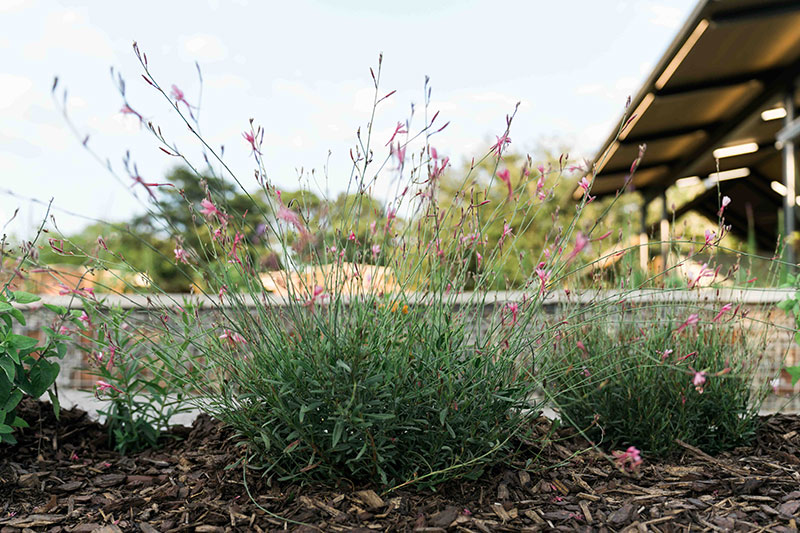Our doors are open! Welcome to The Pavilion at The Nest!
Fairhope Educational Enrichment Foundation’s The Pavilion at The Nest was the brainchild of dedicated FEEF Board Members over a span of 26 years and was made possible with generous donations from Fairhope Single Tax Corporation, the City of Fairhope, and countless local businesses and individuals. The central focus of The Pavilion at The Nest is to expand STEAM learning opportunities to all K-12 students and the community. Each element encompasses hands-on, interactive learning in a green space that preserves our natural habitat in Fairhope.
The Pavilion at The Nest will also serve as an educational venue for the public. All guests hosted at The Pavilion at the Nest will have the opportunity to explore nature with educational resources to enhance their environmental awareness. FEEF hopes to share the beauty of this historical location with the public while simultaneously raising integral funds for our children’s STEAM education. Whether your event calls for a covered seating for up to 200 people, or an expansive lawn, The Pavilion at The Nest is the ideal choice. Guests love the fact that our outdoor space can be perfectly configured for any event!
Landscape and Sustainable Design
Landscape
Too often we think of landscaping around our homes as merely decorative, an aesthetic accessory. But before the home existed, the land was home to other beings- birds, pollinators, maybe even foxes or deer. If we aren’t careful, the landscape around our homes and businesses can become a “food desert” for the wildlife that makes our community so unique, including the monarchs on their way to Mexico and the estimated 2 billion birds that pass through each year. We live in one of 36 areas in the world designated as biodiversity “hot spots” for both the abundance of life and the level of threat facing the ecosystems.
The Pavilion at The Nest’s landscape was designed as a habitat restoration and enhancement to celebrate that biodiversity. The native and adapted plants are low maintenance, able to survive without irrigation once properly established, and to thrive without the chemical pesticides and fertilizers that can pollute our bay and waterways. The landscape is a human habitat as well, many of the native plants were selected for their appeal as edible, medicinal, or decorative plants for public enjoyment. In addition to the native plants, we have included some edible cultivars for all visitors to enjoy and share.
Sustainable Design
The Pavilion at The Nest was built with sustainable building solutions for our hot humid climate, to create built environments that inspire a greater connection with the natural world.
Generally, homes and businesses use drinking water for irrigation, for cleaning, and even to flush toilets. In a typical building, all water that is used is sent to the sewer for treatment, whether it comes from a toilet, or sink, or a water fountain. At the Pavilion, lightly used sink waste, called “grey water” is treated on site, while only the water from toilets is sent to the sewage treatment plant. The drains from our sinks flow into the planting beds with oyster shells surrounding the cistern and act as a water purifier, powered by plants, soil, and microbes. The biological activity of the soil and root systems act as a kind of living machine to treat grey water.
Rainwater is also collected in the cisterns. The rainwater cisterns allow us to flush toilets and irrigate the landscape with a free abundant resource…rain! They also relieve pressure on our municipal drinking water supply.
The step pools in the bioswales slow down, filter and absorb rainwater, lessening the burden on our overloaded storm sewer system.
The roof of The Pavilion at The Nest is designed to house a future solar array to power The Pavilion, Pelican’s Nest, and future Innovation Center. The solar array will charge batteries in The Pelican’s Nest that will provide an emergency backup pier, ensuring that the turtles and fish inside survive in case of a power outage. Unlike a diesel generator that only provides a benefit when the power is out, and is quite costly to keep refueled, a solar backup generator provides clean, free power, all year round, and “refuels” with sunlight.
Protect Our Watershed
Mobile Bay is the fourth largest estuary in the United States, serving as a drainage system for 43,662 miles. Water from three states washes down 5 rivers and ends up at our doorstep. Unfortunately, sometimes that water is polluted by erosion, by excess fertilizers washing off yards and crops, by industrial pollution, and even air pollutants like mercury that fall to the ground. Our goal is to educate learners of all ages ways to protect our watershed.
The Pavilion at The Nest campus demonstrates several ways we can be good stewards of the bay. We are using pervious paving to reduce excessive runoff, capturing and using rainwater on site, and by treating stormwater runoff with green infrastructure so that the water that does run off our campus and into the bay is clean. Rainwater in fact, is an important part of the design of our campus.
The historic school was developed with old ways of thinking about rainwater. They wanted to get it off site as quickly as possible and added paved gutters and large flumes to do so. By speeding up water moving across the site and not allowing any of it to soak in, the water is more likely to cause erosion and carry red dirt and silt, along with whatever fertilizers or oils washed off the site, into the bay.
Students who visit the campus will learn that what we do upstream in our houses, our yards, and our town affects the health of the bay. They can see the old ways of managing stormwater with grey infrastructure (pipes and gutters) side by side with our green stormwater infrastructure, and measure the difference in water quality.
Education
On any given day Fairhope students can feel the energy of STEAM. STEAM is a movement embraced by FEEF integrating Science, Technology, Engineering, Art and Math. Fairhope students are running on STEAM! Goggle-clad, young scientists create robotic arms or dissect a starfish while examining both its scientific and natural deisgn properties. Students integrate math, science and technology into theater, marching band and guitar labs. Likewise, for engineering students art and design are important components of building a competitive moon buggy or downhill racer. These Fairhope students will be the educators, innovators and learners of the 21st Century.
The Pavilion at The Nest is the first project in a multi-phased plan to Preserve the Past and Prepare the Future. Building on the 26-year history of FEEF’s signature project, the Pelican’s Nest Science Lab, The Pavilion at The Nest will expand STEAM for Baldwin County students by visiting, researching and learning the ecology of Mobile Bay.
Not only will The Pavilion at The Nest serve to expand learning about our beloved Mobile Bay and its many creatures, but it will also be an Alabama Wildlife Federation Accredited Outdoor Classroom, meeting Alabama Life Science Standards for Kindergarten through High school biology. The Pavilion at The Nest will include a wide variety of learning stations that help teachers utilize the outdoors as an educational tool for hands-on, inquiry-based activities.
Explore The Pavilion at The Nest’s Outdoor Classroom Learning Stations below.
Butterfly Garden – includes flowering perennials for butterflies and “host” plants for caterpillars, so that students can observe the full life cycle of a butterfly, track butterfly migrations, and learn about the impact that habitat loss can have on the populations of butterflies and other animals.
Cardinal Directions Sign – a 4-6 foot post with wooden arrows attached pointing to north, east, south and west, so that students can track the path of the sun and clouds through the sky, monitor the shadows cast by the moving sun, and understand local geography.
Frog & Toad Habitat – includes a small pond and bog that provides food, water, and shelter for frogs and their tadpoles, so that students can observe the full life cycle of frogs, study the differences between the bog’s sandy soil and the more common red clay, and learn how a bog acts like a wetland as it absorbs and cleans rainwater.
Log Decomposition Station – includes logs and leaves placed on the bare ground, so that students can observe how decomposers like pill bugs (or rollie pollies) play a vital role in ecosystems as they break down the logs, leaves and other dead matter which then provides nitrogen, carbon, and energy for plants and other animals in the ecosystem.
Pollinator Garden – includes flowering perennials that provide nectar for bees, butterflies and other pollinators, so that students can observe pollination, learn how pollination is required to produce fruits and vegetables, and understand how the decline in bee populations can impact our food production.
Sensory Garden – includes perennials that engage all five senses such as lamb’s ear, mint, and rosemary, so that students can learn how to use all of their senses as they record their observations and data in the outdoor classroom.
Songbird Sanctuary – provides food, water, shelter and places to raise their young for local songbirds, so that students can observe the different adaptations that bird species have that help them survive, use their geography skills as they track bird migration across the U.S., learn how humans can help create habitat for songbirds, and understand the role birds have in local ecosystems.
Weather Station – includes weather measurement tools (such as a thermometer for temperature, anemometer for wind speed and direction, barometer for air pressure, hygrometer for humidity, and rain gauge for rainfall) that students can use to measure, record and track weather conditions over time.
If you are interested in learning more about the AWF Accredited Outdoor Classrooms, visit their website: Alabama Wildlife Federation | AWF
These programs would not be possible without our community’s support. Special thanks goes to Fairhope Single Tax Corporation, the City of Fairhope, and countless local businesses and individuals who have made these endeavors possible.
If you are interested in learning more or scheduling a field trip, please fill out the contact form below.
Interested in Fairhope Educational Enrichment Foundation’s The Pavilion at The Nest? Give us a call, send an email, or use this contact form to get your questions answered!
"*" indicates required fields
Fairhope Educational Enrichment Foundation’s The Pavilion at The Nest
108 South Summit St.
Fairhope, AL 36532
Contact Us:
251-990-3333







